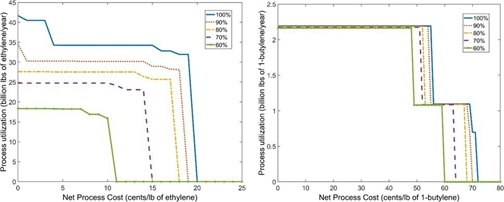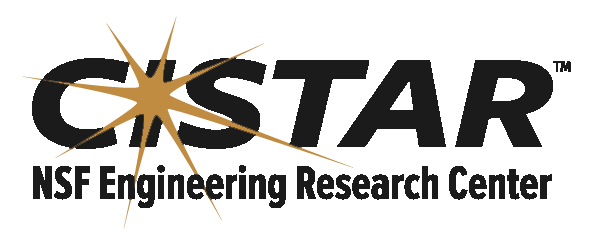Nonlinear Model of U.S. Petrochemical and Refining Industries Helps Evaluate CISTAR Technology
Outcome/Accomplishment
Researchers at the Center for Innovative and Strategic Transformation of Alkane Resources (CISTAR), an NSF-funded Engineering Research Center (ERC) introduced a new, nonlinear, industry-wide, optimization-based model of the U.S. petrochemical and refining industries for use in evaluating the impact of new chemical process technologies.
Impact/Benefits
The model enables researchers to assess the economic impact of CISTAR-developed technology in the hydrocarbon industry and its potential impact on future industry development, as well as the impact of CISTAR technology in helping the industry move to a lower-carbon future based on renewable energy and recycled resources.
Explanation/Background
The model treats the US petrochemical and refining industries as a network of interconnected chemical processes. Each process is characterized by its raw material and energy consumption, capital and operating costs, and carbon emissions. Unlike previous linear models of this type, the nonlinear model accounts for changes in intermediate raw material prices and, thus, process operating costs as new technology is added to the industry network. The Center has developed a method for propagating cost and price changes, permitting the solution of the nonlinear optimization problem as a sequence of linear problems. Using this modeling approach, CISTAR published studies that account for and identify the direct and secondary consequences of introducing new technology on the rest of the industry.
For each new technology evaluated, researchers determine the production level of the technology in the optimal industry network. By doing this over a wide range of net process cost points, a maximum adoption cost (the net process cost beyond which the technology would not be adopted) can be identified, and its sensitivity to the assumed product yield determined for each new technology can be studied. The maximum adoption costs can be viewed as targets for future catalyst research, reaction engineering, and process development work. Scenarios in which the ethane supply is constrained to current values and in which it is unconstrained are considered.
Location
West Lafayette, Indianawebsite
Start Year
Energy and Sustainability
Energy, Sustainability, and Infrastructure
Lead Institution
Core Partners
Fact Sheet
Outcome/Accomplishment
Researchers at the Center for Innovative and Strategic Transformation of Alkane Resources (CISTAR), an NSF-funded Engineering Research Center (ERC) introduced a new, nonlinear, industry-wide, optimization-based model of the U.S. petrochemical and refining industries for use in evaluating the impact of new chemical process technologies.
Location
West Lafayette, Indianawebsite
Start Year
Energy and Sustainability
Energy, Sustainability, and Infrastructure
Lead Institution
Core Partners
Fact Sheet
Impact/benefits
The model enables researchers to assess the economic impact of CISTAR-developed technology in the hydrocarbon industry and its potential impact on future industry development, as well as the impact of CISTAR technology in helping the industry move to a lower-carbon future based on renewable energy and recycled resources.
Explanation/Background
The model treats the US petrochemical and refining industries as a network of interconnected chemical processes. Each process is characterized by its raw material and energy consumption, capital and operating costs, and carbon emissions. Unlike previous linear models of this type, the nonlinear model accounts for changes in intermediate raw material prices and, thus, process operating costs as new technology is added to the industry network. The Center has developed a method for propagating cost and price changes, permitting the solution of the nonlinear optimization problem as a sequence of linear problems. Using this modeling approach, CISTAR published studies that account for and identify the direct and secondary consequences of introducing new technology on the rest of the industry.
For each new technology evaluated, researchers determine the production level of the technology in the optimal industry network. By doing this over a wide range of net process cost points, a maximum adoption cost (the net process cost beyond which the technology would not be adopted) can be identified, and its sensitivity to the assumed product yield determined for each new technology can be studied. The maximum adoption costs can be viewed as targets for future catalyst research, reaction engineering, and process development work. Scenarios in which the ethane supply is constrained to current values and in which it is unconstrained are considered.

